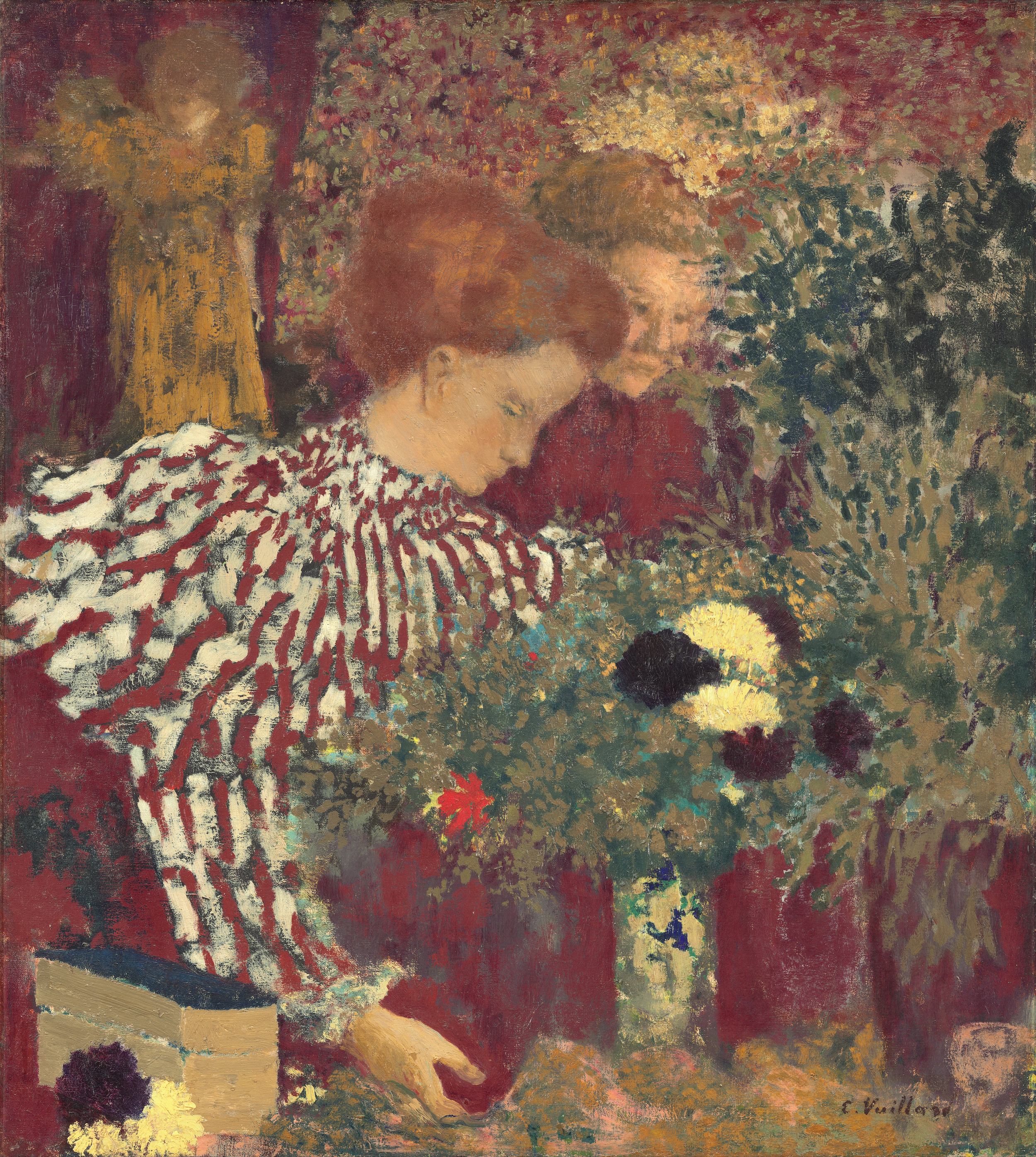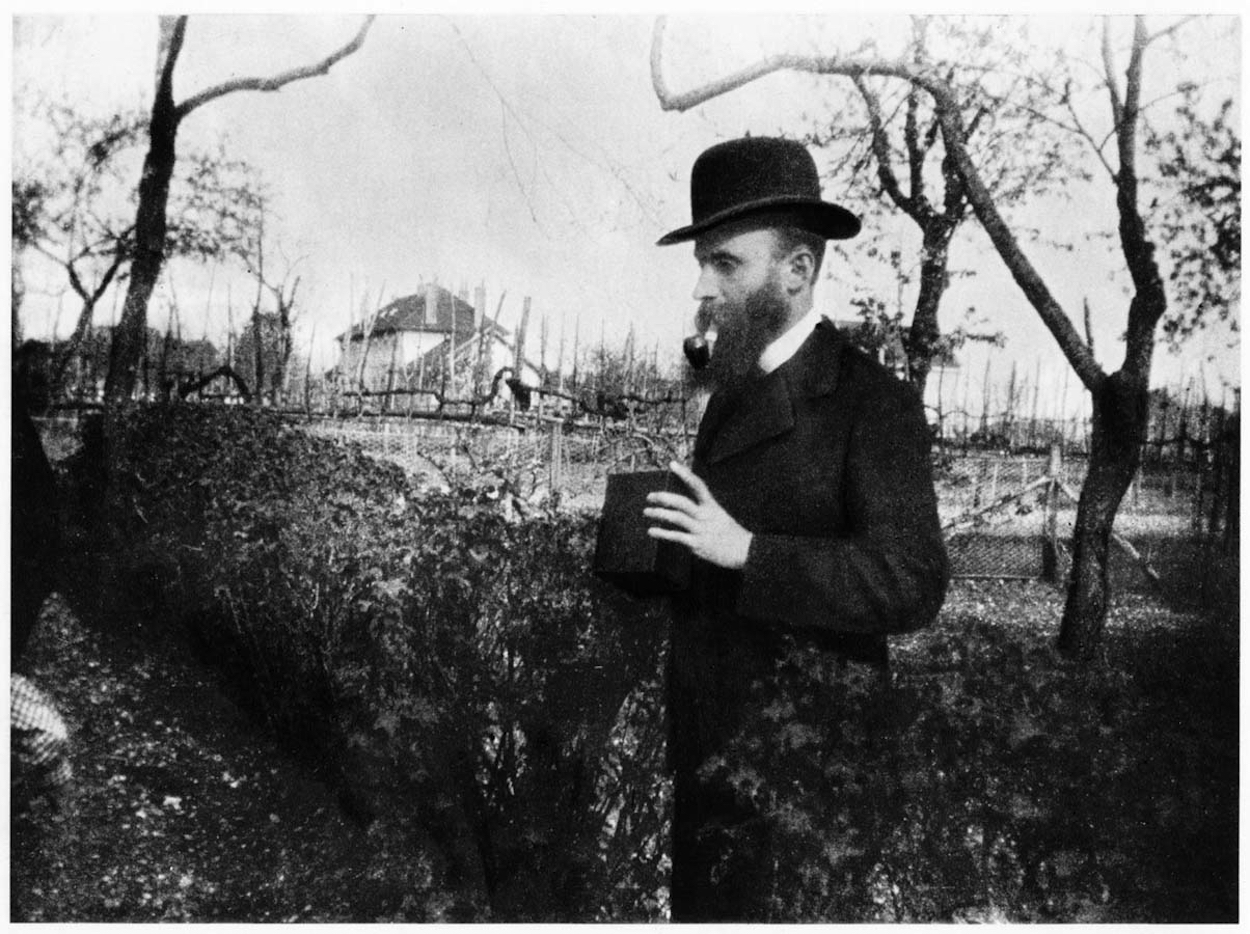Vuillard was one of the Nabi, a group of young artists that arose in about 1890. That word in Hebrew means a prophet. The Nabi rejected impressionism and considered simple transcription of the appearance of the natural world unthinking and unartistic. Inspired by Gauguin's work and symbolist poetry, their paintings evoke rather than specify, suggest rather than describe.
Woman in a Striped Dress is one of five decorations Vuillard painted in 1895 for Thadée Natanson, publisher of the avant-garde journal La Revue Blanche, and his wife Misia Godebska, an accomplished pianist and a great patron of artists. The five, which differ in size and orientation, are intimate, self contained interiors, Vuillard's principal subject. All display rich harmonies in a restricted range of color and densely arranged in intricate patterns. Vuillard adopted the symbolist idea of synesthesia, whereby one sense can evoke another, and in Woman in a Striped Dress the sumptuous visual qualities of Vuillard's reds may suggest the lush chords of music that Misia performed.




Woman in a Striped Dress
oil on canvas • 58.7 x 65.7 cm
 Édouard Vuillard
Édouard Vuillard